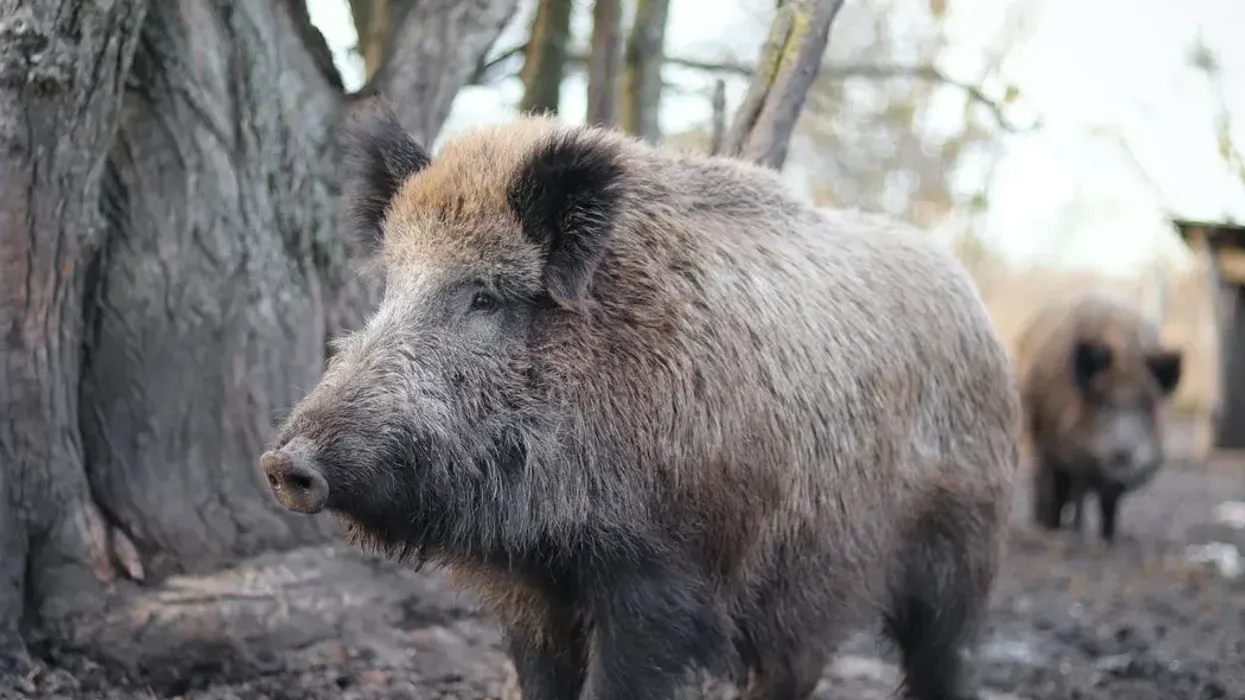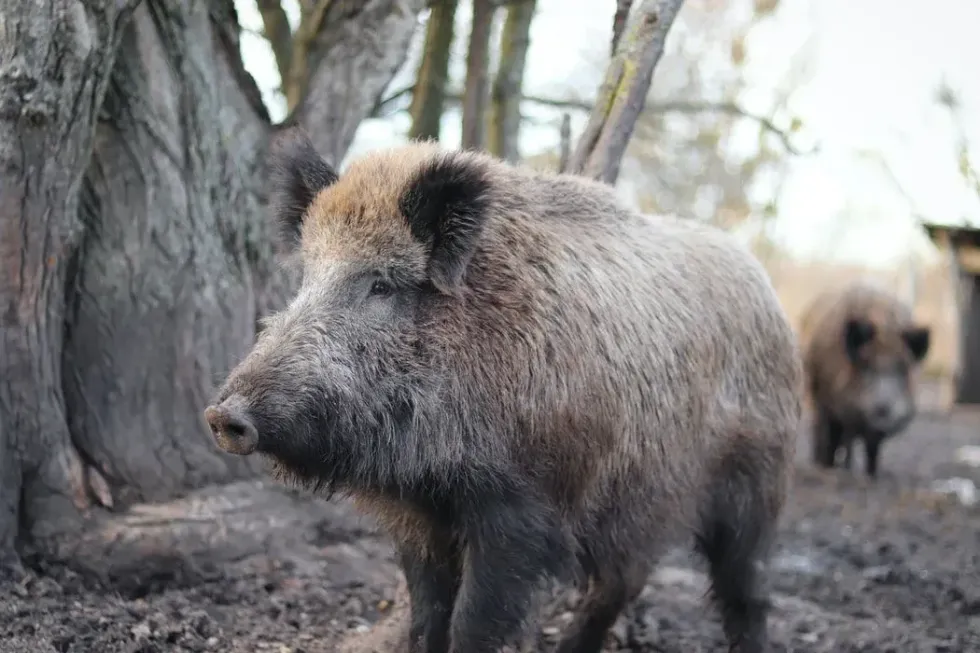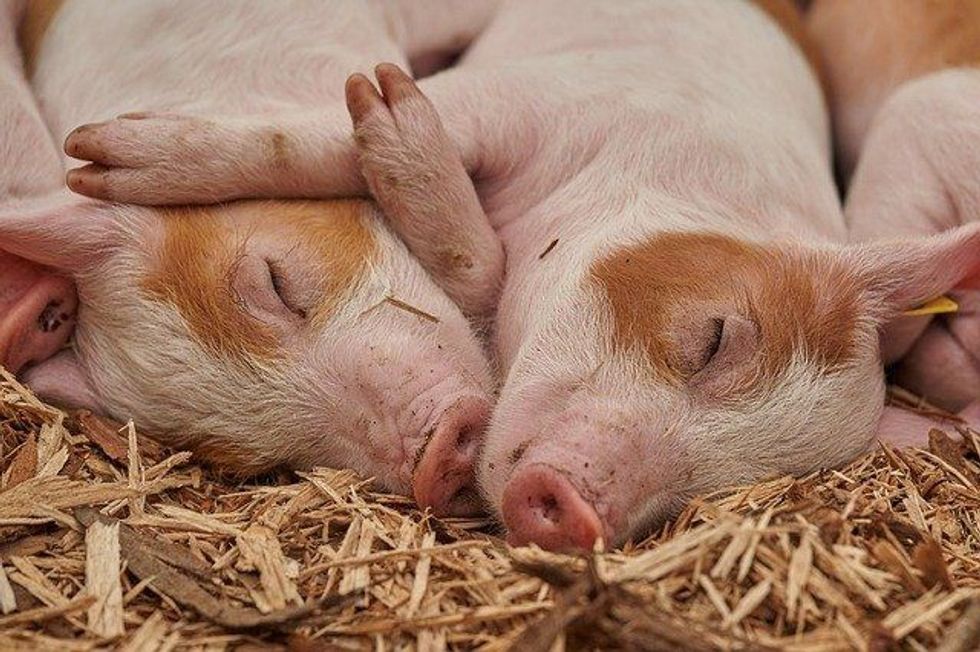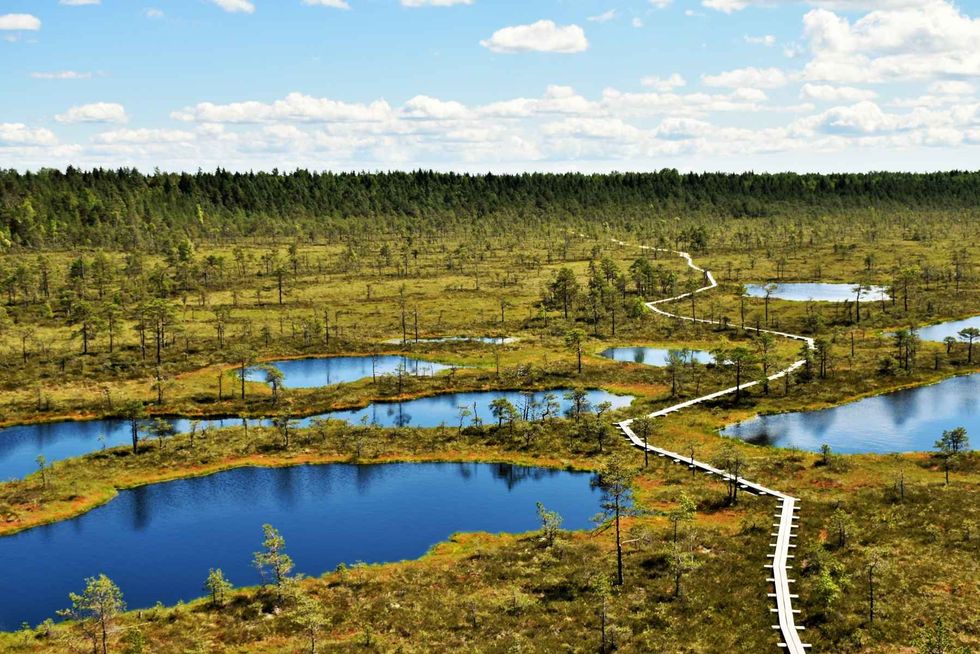The wild boar can be quite an interesting animal to read about. The wild boar, also known as the wild pig, is a member of the pig genus Sus scrofa, and belongs to the Suidae tribe.
The male pig, guinea pig, and a number of other mammals are referred to as a boar. Any wild member of the Sus family is often referred to as a wild boar or wild pig.
European wild pigs, hogs, or simply boars are other names for them. The wild boar is a highly adaptable species that can be found in a number of environments, eats nearly everything that will accommodate in its mouth, and might not only sprint but also float.
Their natural predators include large felines like tigers, wolves, and leopards. It grows up to 90 cm (35 in) tall at the shoulder, has bristly feathers, is grizzled, and is blackish or brown in appearance. Wild boars form a group, with the exception of old males who are solitary.
The creatures are fast, nocturnal, omnivorous, and excellent swimmers. They have sharp tusks which can be threatening, even though they are usually non-aggressive.
In this article, we have compiled all the amazing facts about a wild boar. So read on!
For more similar content, check out Malayan tiger and Borneo elephant.
Wild Boar Interesting Facts
What type of animal is a Wild Boar?
The wild boar (Sus scrofa) is a type of pig.
What class of animal does a Wild Boar belong to?
The wild boar belongs to the class of mammals.
How many Wild Boars are there in the world?
The exact population of the wild boar or feral swine in the world is not known. However, there has been a report of there being 65 million feral swine in the United States. Their population is found across 35 states.
Where does a Wild Boar live?
The wild boar lives mainly in forests and grasslands.
What is a Wild Boar's habitat?
The wild boar is by far the most broadly dispersed ground mammal in the world, with a natural range covering Western Europe, Japan in the east, and Indonesian rainforests to the south. The wild boar habitat includes Europe, Northern Africa, and western areas of Asia.
Wild boars are also found in northern Asia and Japan.
Again, they live in the coastal jungles of Southeast Asia, India, Indonesia, and the Far East areas. They are native to Europe and Asia, but are not native to America and are therefore an invasive species.
Who do Wild Boars live with?
Female wild boars are a natural friendly species that live in loose territorial groups called sounders, which can include a population of anything from 6 - 30 individuals.
Sounders of this species are made up of reproductive females and their offsprings, and they are frequently seen in the same natural region as certain other groups, though they do not gel.
Males, on the other hand, are lone for most of the year, other than during the mating season, since these animals can be observed in areas close to both sounders as well as other males.
How long does a Wild Boar live?
The average wild boar or feral swine species can live up to a range of 10 - 14 years. However, a wild boar can live up to 20 years in captivity.
How do they reproduce?
The boars ride vast stretches of a sounder of sows until they are able to reproduce, eating nothing along the way. When a sounder is found, the male scares off all small animals and pursues the sows aggressively.
At this stage, the male battles off any possible rivals with ferocity. A lone male will mate with up to ten sows at a time.
Males are frequently savaged and also have dropped 20% of their weight by the conclusion of the rut. The gestation phase varies depending on the expectant mother's age.
It continues 114 – 130 days for the first breeders and 133 – 140 days for experienced sows.
After the breeding season, the female wild boars give life to four to six piglets in a nest consisting of leaves, trees, and shrubs, and moss-covered in a deep thicket. To shield her piglets from aggressive predators, the females stay with them during the first few weeks after breeding.
Wild boar piglets feature light brown hair and white and brown streaks running the entirety of their tails, making them very distinct species. While these stripes fade between three to four years.
What is their conservation status?
The IUCN has classified the wild boar as a mammal with a low risk of being extinct in its natural habitat in the immediate future, that is 'Least Concern'. However, total population levels are decreasing, owing to poaching or hunting, and habitat destruction of their groups across continents including Europe.
Wild Boar Fun Facts
What do Wild Boars look like?

The wild boar is a standard size animal with a huge wild boar skull and forward half and a narrower rear end. Wild boars have a dual layer of fur that is dense and gritty, with a tougher, stubbly upper layer and a lighter undercoat.
The fur on the back of a wild boar that runs around the ridge is often longer than the remainder.
How cute are they?
Wild boars are cute in appearance. The wild boar has a snout that makes the animals look cute. Their physical build coupled with the walk of the wild boar gives it a cute appearance.
How do they communicate?
Wild boars use a series of grunts, creaks, and chirrups to communicate with one another. They grunt quite a bit as they chew, and a loud grunt acts as a warning signal to other animals or groups.
How big is a Wild Boar?
The wild boar size stands 21.6 in - 39.3 in (55 cm - 100 cm) tall. It is almost the same size as a regular pig.
How fast can a Wild Boar run?
The wild boar (Sus scrofa), or the feral swine, can reach speeds of up to 30 mph. They go out of pig cages with barriers five to six feet thick and can leap over obstacles just under three feet high.
Since the wild boar can crowd up in the corner and actually crawl over each other, the corner provides enough leverage for them to go over the top. Hence traps with 90-degree corners must be covered on the top. This holds true for domestic pigs as well.
How much does a Wild Boar weigh?
The average Sus scrofa or wild pig weighs around 176 lb - 386 lb (80 kg - 175 kg). However, the largest wild boar is a 600 lb (272 kg) giant wild boar.
What are their male and female names of the species?
The male boar is called a boar, and the females are referred to as sows.
What would you call a baby Wild Boar?
The baby animals of a wild boar are called piglets.
What do they eat?
The feral swine is an omnivorous mammal that eats many vegetables.
Plant matter accounts for about 90% of the diet of wild boar diet as they consume young leaves, seeds, grasses, and vegetables, as well as digging up roots and buds with their strong snouts.
The wild boar or feral swine have had to adjust to varying flowers and plants because they live in extremely seasonal environments, and they are reported to choose the nuts which are rich in protein (like acorns) that are accessible in the fall to help the feral swine prepare for the winter ahead.
Wild boars will, though, eat about everything that will pass into their mouths, as well as eggs, rodents, lizards, insects, as well as snakes, to complement their diet.
Are they dangerous?
Wild boars are harmful not only for their ferocity, but mostly because wild boars carry diseases like measles, Influenza A, and Hepatitis E, which can be transmitted to humans. Wild boar attacks also cause tens of thousands of traffic crashes each year, many of which result in significant injury to drivers.
Thus, a wild boar or a wild pig can kill or harms humans.
Would they make a good pet?
Wild boars can be kept as pets as piglets. But these animals may not make great pets because wild boars are extremely aggressive and challenging to house train. These animals may also become violent toward their caregivers and other animals without warning.
Did you know...
To sharpen the lower tusk, male wild boars or wild pigs have an upper tusk. The snout of the species is perhaps one of the animal's most distinguishing characteristics, and it, like those of other wild pigs, distinguishes these creatures from the rest.
When searching, for meals the snout of the pigs has a cartilage disk at the finish that is backed by a bone fragment termed the prenasal.
This enables the wild boar's snout to be utilized as a bulldozer.
Tusks are seen on the top jaws of all Feral Boars, but the males' are bigger than the females and extend vertically out of their jaws. Male boars have a hollow fang on their upper lip, which serves as a razor knife, polishing the male's lower fangs, which can expand up to 6cm in length.
Do wild boars eat meat?
Yes, wild boars consume the flesh of other animals. This can include snakes, mice, lizards, and insects, or other invertebrates.
Wild Boar derived products
Wild boar-derived items worth noting include fur, which is utilized in brushes and is extremely valuable by the art and hair salon industries. The wild boar also gives leather, which is mostly used in footwear production.
The finely cut wild boar tusks are used as knives and jewelry.
Wild boar are still bred for their flesh in many countries, but they're being slaughtered for their pointed tusks as valuable trophies for decades, resulting in species becoming extinct in some regions, such as the United Kingdom. Humans have brought the wild boar to a variety of countries across the world solely for the purpose of hunting and eating.
Hawaii, Fiji, the Galapagos Islands, New Zealand, Australia, South Africa, Norway, and Sweden are all part of this.
The meat of this species is good to eat as it is flavorful and is considered a delicacy in some places. Hence, there exists a number of wild boar recipes too which teach how to cook a wild boar.
Here at Kidadl, we have carefully created lots of interesting family-friendly animal facts for everyone to discover! Learn more about some other mammals including buffalo and domestic pigs.
You can even occupy yourself at home by drawing one of our Wild boar coloring pages.










